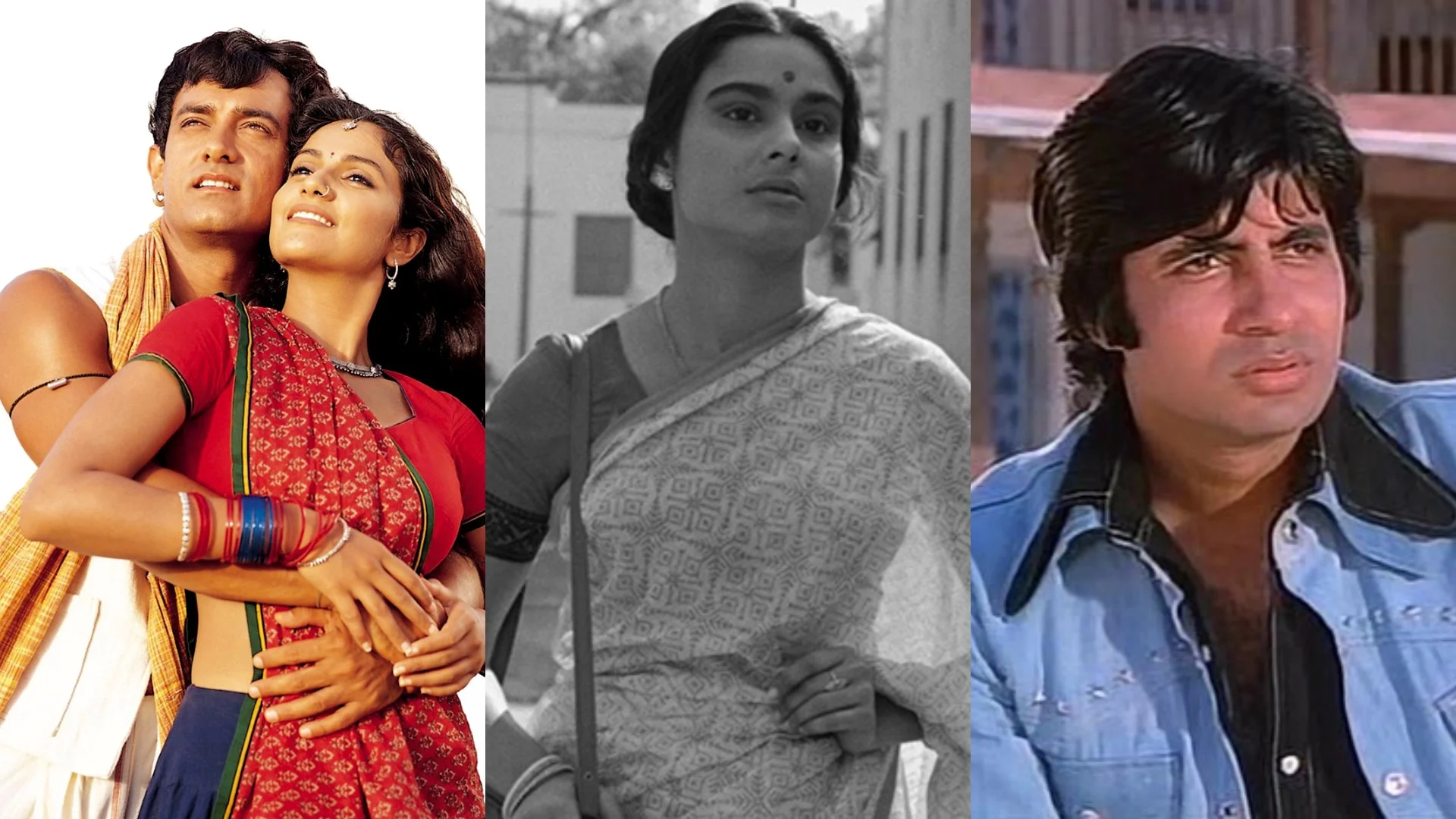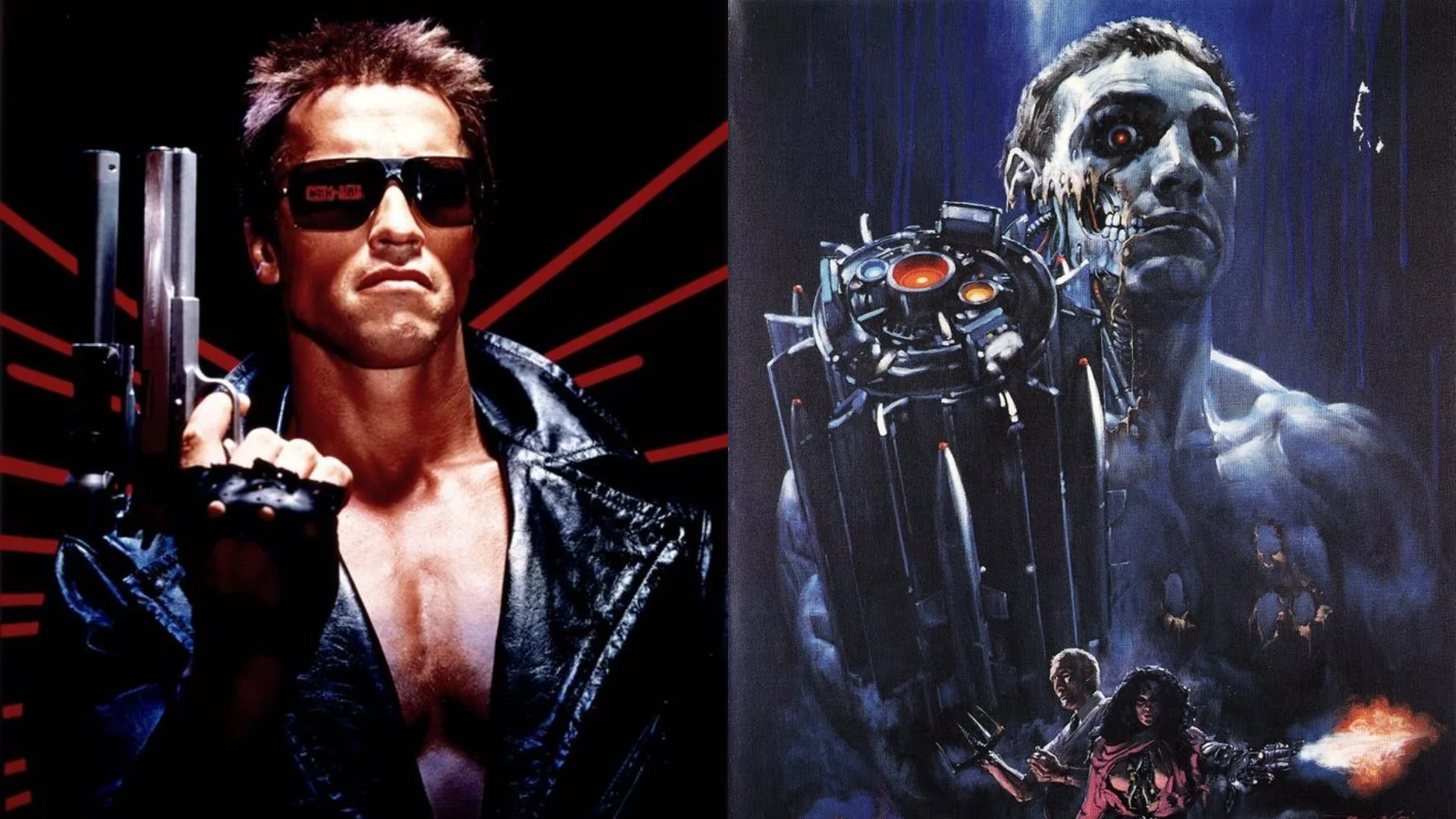10 Essential Films from Indian Cinema
I grew up with Hindi movies, commonly called Bollywood. In fact, I was a major Bollywood fan even before I cared about Hollywood or foreign movies. But the Indian film industry is expansive and intimidating and it’s hard to know where to begin. I compiled a list of ten films that can offer an introduction to Indian films.
Sholay, “Embers” (Ramesh Sippy, 1975)
When people in the West think of Indian films, they generally think of “masala” films (“masala” being the Hindi word for spice). Masala films combine different genres—action, comedy, romance, musical, suspense—into one movie that runs between 2.5-3 hours. Sholay is the definitive masala movie. It’s a Western set in the Indian desert, and one of the most recognizable films to come out of Bollywood. The movie brings together four of Bollywood’s biggest stars: Amitabh Bachchan, Jaya Bhaduri, Dharmendra, and Hema Malini (both Bhaduri and Malini would go on to marry their male co-stars). Sholay also has an iconic and enduring villain, Gabbar Singh, played with menace and brutality by Amjad Khan. The soundtrack by R.D. Burman is full of stunning songs, like the playful “Yeh dosti,” the sensual “Mehbooba mehbooba,” and the defiant “Jab tak hai jaan.” If you want a taste of the quintessential Bollywood movie, start with Sholay.
Dilwale Dulhania Le Jayenge, “The Big Hearted Groom Will Take the Bride” (Aditya Chopra, 1995)
It’s hard to even describe just how important DDLJ is. The film codified so many elements of the modern Bollywood romantic-comedy. And the chemistry between stars Shah Rukh Khan and Kajol is electric and infectious. The duo made a number of films together—many of them classics in their own right—but DDLJ is next level. This film was also one of the first films to deal with the lives of non-resident Indians or NRIs. DDLJ tackles the cultural divide between immigrant parents who long for India while making a home in a new country and first-generation children who are torn between Eastern values and Western lives. This love story broke the trope of young lovers defying their parents—in this film, they refuse to get married without their parents’ blessing. Director Aditya Chopra makes good use of his locations—both in Europe and India, crafting delightful sequences and compelling drama. The music in the film is archetypal, with the whole soundtrack setting the template for future Bollywood musicals.
Mother India (Mehboob Khan, 1957)
If America has Gone with the Wind, then India has Mother India. The dusty and gritty epic shows the social upheaval in post-independence India through the eyes of simple village girl turned matriarch Radha (Nargis in a peerless performance). Khan took the title from the racist colonist polemic written by Katherine Mayo in 1927 and reclaimed it as prideful. Scholars have debated whether Radha is a regressive stereotype or feminist icon (much like Scarlett O’Hara, she’s probably both). Mother India is a grueling film, steeped in symbolic imagery and poetic dialogue. The film shows the nationalistic pride in rebuilding India and the worship of the country as Mother Goddess. Radha becomes a Goddess herself, a portrait of unwavering virtue and high morality, and a vision of Indian potential. Mother India was a beloved film at the time and remains a classic, showing the value of hard work and resolute faith. Mother India was the first of three Indian films to be nominated for the Best Foreign Language Oscar.
Dil Chahta Hai, “What the Heart Desires” (Farhan Akhtar, 2001)
Dil Chahta Hai was a groundbreaking film in 2001, and for me it’s the film that ushered Indian cinema into the 21st century. Dil Chahta Hai is a cultural touchstone for people in my generation. The characters felt like real, flawed people we know rather than idols to be worshiped. The soundtrack by Shankar-Ehsaan-Loy redefined Bollywood music, with its deep orchestrations, unique instrumentation, and thoughtful lyrics by Javed Akhtar. The film travels to Goa and Sydney from Mumbai, with brilliant depictions of the locations. The coming of age story follows three friends all in their own love stories, ranging from conventional to quirky to tragic. Dil Chahta Hai really captures youth and friendship with specificity, precision, and depth. The film has an improvised, low-key vibe, depicting modern life just as it is. The screenplay is sensitive and insightful, with compelling performances to match. The visual palette of the film is truly wonderful; the cinematography, the editing, and the costume design were trendsetting at the time.
Hum Aapke Hain Koun..!, “Who Am I to You..!” (Sooraj Barjatya, 1994)
This film has gone down in history as one of the most successful blockbuster entertainers in Indian film history. The film is a family musical-drama, about two extended families bound together and the struggle between love and duty. Boosted by textured performances from the ensemble cast, an evergreen soundtrack popular to this day, and glamorous production values, HAHK is an enduring classic of Indian cinema. Barjatya’s direction is expressive, capturing every small detail, every small facial expression among the grandeur of his setting. The film depicts Indian ceremonies with precision and affection, creating a warm and inviting masterpiece. Much like DDLJ above, this film is about the relationship between tradition (arranged marriage, duty to family) and modern ideals. HAHK reinvigorated the box office both in India and abroad. It’s an amazingly influential, oft-referenced film both in cinema and in real life (really, some of the rituals shown in the film happen at every Indian wedding because of the film).
Mahanagar, “The Big City” (Satyajit Ray, 1963)
Satyajit Ray was one of India’s most renowned and famous directors; his Apu Trilogy introduced Indian cinema to the West. While the Apu Trilogy is an acclaimed piece of art cinema, I wanted to highlight Mahanagar. It’s a feminist story of a housewife named Arati (Madhabi Mukherjee) who disrupts societal norms by taking a job in Calcutta. Ray’s elegant and simple direction lends itself well to this story of a woman finding joy in independence and breaking away from tradition. The film tackles difficult subjects with humanity and insight. In Mahanagar, Ray also explores the after effects of the British occupation, as Arati befriends an Anglo-Indian woman named Edith (Vicki Redwood). The friendship between Arati and Edith adds an element of racial tension; Ray comments on the discrimination Anglo-Indians endured at the time. Arati crosses the racial barrier, and faces difficult decisions as a result. Mahanagar is heartbreaking, touching and probably Ray’s best film.
Neerja (Ram Madhvani, 2016)
The most recent film on this list, Neerja is a striking, harrowing hijack thriller featuring a standout performance from Sonam Kapoor. Neerja Bhanot was a model/flight attendant who saved over 350 lives when terrorists hijacked one of her flights, and became a worldwide hero. Neerja is really a terrific film, both because of its remarkable true story and because of the filmmaking. The editing is really expressive, using flashbacks to comment on the present very effectively. The movie’s feminist themes can be a bit heavy-handed, but the story and the themes are really powerful. Sonam Kapoor was known for making girlish romantic-comedies before this film and for her offscreen persona as a fashionista. In Neerja, she finds power and resolution in her girlish persona and delivers a career-defining performance. By all accounts, Neerja sticks pretty close to the real life incident, and its quite remarkable to see a young woman who openly embraced her femininity be portrayed as a hero without transforming into a superhero.
Mughal-e-Azam, “Emperor of the Mughals” (K. Asif, 1960)
Indian cinema is full of romantic epics like Devdas in its multiple versions, and Veer-Zaara (2004). Mughal-e-Azam is perhaps the most influential of the Indian romantic epics. The film tells the tragic love story between Mughal prince Salim (Dilip Kumar) and the royal dancer Anarkali (Madhubala) torn apart by Salim’s father Akbar (Prithviraj Kapoor). Shot in black and white and colorized in 2004, the film is widely considered to be one of India’s most celebrated epics. The film features lavish production design, melodious music (including one of the most popular and beautifully directed Indian songs of all time “Pyaar kiya to darna kya”), tender dialogue, and passionate acting. Mughal-e-Azam is also steeped in politics with its depiction of Hindu-Muslim cohabitation, and the inter-class romance. The classes are somehow both interconnected yet separate, united yet disparate. The romance between Salim and Anarkali and the war it causes shows the struggle between the nation and the individual. Mughal-e-Azam is a thematically rich and visually gorgeous film.
Amar Akbar Anthony (Manmohan Desai, 1977)
Three brothers are separated as children and are raised in different religions: the Hindu Amar (Vinod Khanna), the Muslim Akbar (Rishi Kapoor), and the Christian Anthony (Amitabh Bachchan). How the three brothers reunite and work together to overcome a common enemy forms the main plot of the film. Amar Akbar Anthony is an immensely popular film not just for its exciting action, catchy songs, and zingy one-liners, but also for its themes of brotherly love and unity among India’s main three religions. The film features the classic image of the three brothers donating blood to a woman they don’t know is their mother (Nirupa Roy), unaware that they are all related to each other. The image represents that India (their mother) needs all three religions (the brothers) to survive. Each brother has his own love interest (played by Shabana Azmi, Neetu Singh, and Parveen Babi) who all add to the story and share terrific chemistry with their counterparts. For all its subtext, however, Amar Akbar Anthony is simply a really entertaining, wild ride.
Lagaan, “Taxation” (Ashutosh Gowariker, 2001)
Many Indian films deal with the effects of British colonization in India as we’ve seen on the list. Lagaan follows a small Indian village that challenges a British officer to a game of cricket in order to relieve the village of oppressive taxes and harsh treatment. Lagaan is a sports drama, and it deals with themes of teamwork, resilience, betrayal, and equality. The songs were composed by Oscar winner A.R. Rahman; his compositions are earthy yet progressive. Lagaan broke barriers by crossing over to the West, becoming the third Indian film to get an Oscar nomination. If it had won, there would be more awareness of Indian film in the West. Entertaining, while also quite brutal, while the cinematography captures the wide vistas of India beautifully. Almost every South Asian rallied behind it; a crowd-pleasing movie, made with affection, detailed production design, and emotional honesty.













